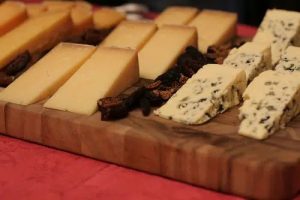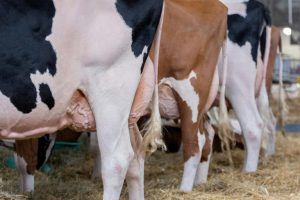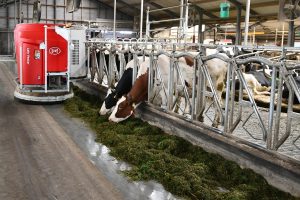
We celebrate Christmas with our loved ones with special gifts, a special meal or perhaps some extra time of rest. Times have changed from years past in the feeding and comfort of our cows. Today, cows are fed total mixed rations and given comfortable beds all year around.
So what do cows want this Christmas season and what are gifts you can give your cows? The A, B, C’s of cow gifts are an opportunity to give back.
Today’s modern dairy farmers provide excellent care for their cows. Some readers have been caregivers for family or friends. I speak from experience; caregiving is exhausting.
Farmers are excellent caregivers for their cows, regardless of the herd size. Dairy cows today roam free in free stall barns, get milked two or more times a day in comfortable sanitary parlors or AMS milking systems and have continuous access to a college-like salad, entree, beverage and desert-type food bar.
TMR’s are fed to cows daily with precision formulation where all proper nutrients are provided in each mouthful of food. I have formulated thousands of dairy cow diets over my 35 years as a dairy nutritionist. Believe me, most dairy cows eat better than humans. Cows receive their 50-plus nutrients in the right proportion every day. Let’s review a possible A, B, C (air, bunk, comfort) of cow gifts.
Air
A high-producing dairy cow is most comfortable in temperatures of 35 to 65 F. In cold weather, the indoor barn temperature will be 5 to 10 degrees warmer than the outdoor temperature depending upon stocking density, wind and ventilation. In cold weather, the goal is to provide enough ventilation to control barn moisture.
Dairy cows respire three to seven gallons of water per cow per day. Additional barn moisture accumulates from manure and urine in the cow alleys or gutters and water spilled around drinkers. A minimum of 50 cfm per cow air change is necessary to remove the moisture. A dairy cow would rather be cold and dry than warm and damp.
When temperatures drop below freezing, the barn curtains, ridge openings and sides can be somewhat closed but poor air quality must be avoided in cold weather. Low air turnover leads to excess barn moisture and poor cow health (pneumonia).
Day length refers to the number of hours that cows are exposed to light with an intensity of 15-foot- candles. This intensity can be measured with a meter, but in practice, if you can read the fine print on a newspaper at arm’s length then light intensity is adequate. I know, some of you cannot read the fine print at arm’s length no matter how much light, so use a meter.
Dairy cows respond with 5 pounds of milk per cow per day (range 4#-6#) based on nine university side-by-side studies when exposed to 18 hours of light and six hours of darkness. Three times milking may require red light installation to achieve the six hours of continuous darkness. Lights must be installed to achieve the 15 FC minimum across the entire barn at cow eye level.
Bunk
Free stall feed bunk space is a function of barn design (4 row or 6 row), stocking density, TMR delivery, daily access time and time away from pen (milking). Recommended feed bunk space per cow is 24 inches or greater and TMR access greater than 22 hours per day.
Feed bunk space less than 16 inches per cow and less than 20 hours of access per day is a risk factor for less production, poor health or both. Six row barns are prone to the negative effects of increased stocking density as 100% stock density provides at best 18 inches of feed space.
Four row barns at 120% stocking still provide 24 inches of bunk space per cow. Time away from the pen for milking should be no more than three hours per day. Time from pen to parlor is measured as time first cow departs to the last cow returns to pen.
Research shows that six hours from pen versus three hours in pen reduces cow lying time three to four hours per day and results in five to eight pounds less milk per cow per day. Less lying time increases risk for lameness and less feed intake.
Comfort
A dairy cow’s ideal daily time budget includes 13 hours resting, five hours eating, two and a half hours milking, 0.75 hours drinking, and the remainder of day in socializing, grooming and other activities.
Stall bed design and comfort allow the cows to rest comfortably while ruminating the ration. Resources are available from Ohio State on best stall design and stall bed management. A cow should be either lying down, eating or being milked.
Take time to observe your cows this season at various times of the day. Cows that are not eating, resting, drinking, showing heat or being milking indicate an opportunity to give your cows an extra Christmas gift this season.
Blessings and a big thank you to all of the excellent dairy farmers who dedicate their lives to being the best caregivers for their cows. Merry Christmas.

























